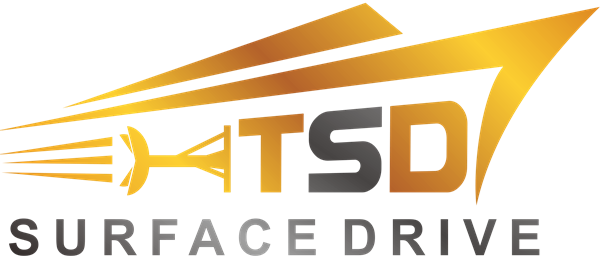Views: 0 Author: Site Editor Publish Time: 2024-07-24 Origin: Site








Boat propellers are crucial components of maritime vessels, transforming engine power into thrust to propel the boat through the water. Despite their importance, propellers are typically exposed rather than enclosed. This article explores the reasons behind this design choice, considering technical, practical, and economic factors. We'll also discuss the potential advantages and disadvantages of enclosed propellers and examine whether future advancements might lead to changes in their design.
Before delving into why boat propellers aren't enclosed, it's essential to understand how they work. A boat propeller operates by rotating its blades in the water, creating a pressure difference that pushes the boat forward. The efficiency of this process depends on the design and positioning of the propeller, as well as the characteristics of the boat's hull and engine.
One of the primary reasons boat propellers are not enclosed is related to hydrodynamic efficiency. An exposed propeller can operate with minimal resistance, maximizing the transfer of engine power to water thrust. Enclosing a propeller could create additional drag, reducing efficiency.
Drag Reduction: Open propellers have less surface area interacting with the water compared to enclosed designs, minimizing hydrodynamic drag. This allows for smoother and more efficient movement through the water (Marine Engineering Online).
Propeller Cavitation: Enclosing a propeller can lead to increased cavitation, where vapor bubbles form around the propeller blades due to rapid pressure changes. Cavitation can reduce propeller efficiency and cause damage over time (BoatUS).
Flow Dynamics: Open propellers benefit from a clean inflow of water, which helps maintain laminar flow around the blades. Enclosing the propeller could disturb this flow, leading to turbulent conditions that diminish performance (Practical Sailor).

In addition to efficiency, practical considerations also play a significant role in the decision to keep propellers exposed.
Maintenance and Repair: Exposed propellers are easier to inspect, maintain, and repair. Any damage or debris entanglement can be quickly identified and addressed. Enclosing the propeller would complicate these tasks, potentially leading to higher maintenance costs and more downtime (The Hull Truth).
Cost and Manufacturing: The design and manufacturing of enclosed propellers would be more complex and expensive. This added cost may not be justifiable given the marginal benefits for most types of recreational and commercial vessels (Boating Mag).
Flexibility in Design: Open propellers allow for a wide range of designs and customizations based on the specific needs of the vessel. Enclosed systems would limit this flexibility, making it more challenging to optimize performance for different boating applications (BoatBlurb.com).
Safety is another significant factor in the design of boat propellers. While open propellers pose risks, particularly to swimmers and marine life, enclosing them is not always the best solution.
Propeller Guards: In some cases, propeller guards are used to enhance safety without fully enclosing the propeller. These guards can prevent accidental contact while still allowing for efficient operation (Boating World).
Emergency Maneuvering: Enclosed propellers could hinder a boat's ability to perform emergency maneuvers, such as quickly reversing or turning sharply to avoid collisions. Open propellers provide more immediate and responsive control (Marine Insight).

While traditional boat designs favor exposed propellers, ongoing technological advancements could change this preference in the future.
Ducted Propellers: Ducted propellers, also known as Kort nozzles, are partially enclosed systems used primarily in tugboats and other vessels requiring high thrust at low speeds. These designs offer improved efficiency for specific applications, but their use is limited by cost and complexity (International Marine Engineering).
Electric Propulsion: Advances in electric propulsion systems could lead to more innovative propeller designs, including enclosed options. Electric motors can operate more efficiently at various speeds and load conditions, potentially mitigating some of the drawbacks of enclosed propellers (Electric & Hybrid Marine Technology).

To illustrate these points, consider the following examples:
Recreational Boating: In recreational boating, open propellers remain the norm due to their cost-effectiveness, ease of maintenance, and flexibility. Boaters prioritize performance and convenience, which open propellers provide.
Commercial Shipping: In commercial shipping, efficiency and durability are paramount. While ducted propellers are used in specific scenarios, the majority of commercial vessels rely on open propellers for their robustness and adaptability.
Military Applications: The military often uses advanced propeller designs, including partially enclosed options, to optimize performance for specific missions. These designs are tailored to the unique requirements of military operations and are not necessarily applicable to civilian use.
The decision to keep boat propellers exposed rather than enclosed is influenced by a combination of hydrodynamic efficiency, practical considerations, safety concerns, and technological limitations. While enclosed propellers offer certain advantages, such as enhanced safety and specific performance benefits, they also present significant drawbacks that make them less suitable for general use.
As technology evolves, it is possible that new materials and propulsion systems will lead to more widespread adoption of enclosed propeller designs. However, for the foreseeable future, open propellers will likely remain the preferred choice for most boating applications due to their proven performance, cost-effectiveness, and ease of maintenance.
In conclusion, the balance between efficiency, practicality, and safety will continue to shape the future of boat propeller design. Boaters and manufacturers must weigh these factors carefully to choose the best propulsion system for their specific needs.
